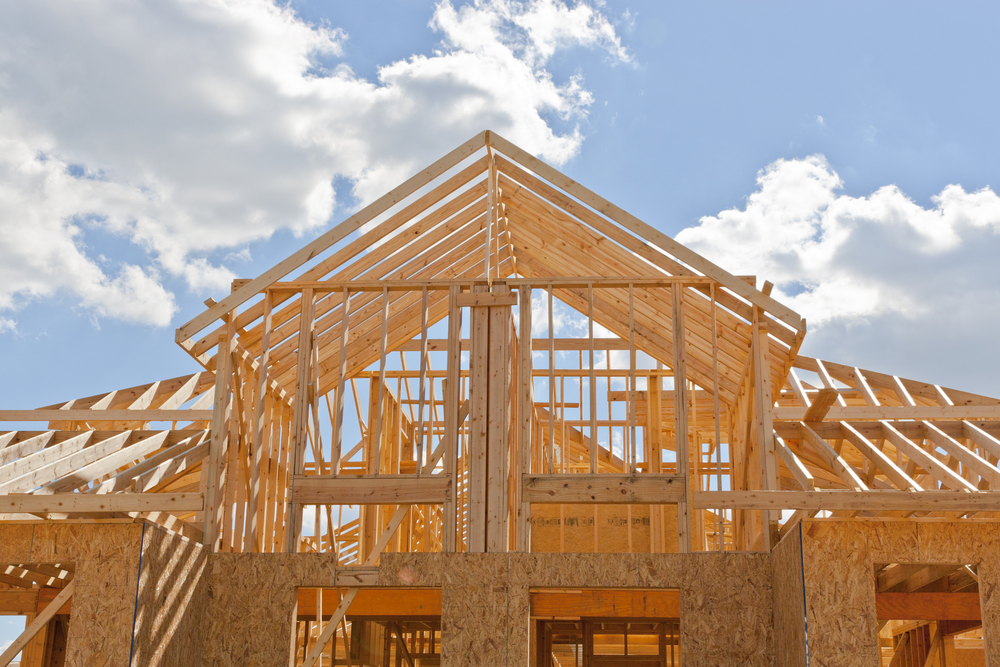Reasons Enterprising Builders Should Consider Hempcrete


As more states legalize marijuana, cannabis has been growing in popularity in increasingly surprising ways. Want proof? Say hello to the hempcrete house.
In case you’re wondering, these buildings won’t get you stoned. But they could become the next big thing in real estate for a whole bunch of reasons. Here’s everything you ever wanted to know about hempcrete homes.
What is hempcrete?
While hemp and marijuana are both varieties of cannabis plants, their similarities pretty much end there.
“Hemp and marijuana are related but are distinctively different,” says hempcrete expert Chad Knutsen of Smart Dimensions, Joint Venture.
For one, a hemp plant is huge, and can grow over 12 feet tall. It also contains very little THC, the psychoactive compound in marijuana that makes you high.
“They are typically made up of less than 0.3% THC,” Knutsen explains. Marijuana plants have THC levels ranging from 5% to 35%.
Nonetheless, hemp has many real-world uses. The fibers from a hemp plant stalk are extremely strong, and have been used for centuries to make an assortment of items, including rope, cloth, and a mudlike building material that dries and hardens into bricks. The modern-day version of this is hempcrete.
In fact, structures made from early versions of hempcrete have been built as far back as the sixth century, Knutsen says. We know this because some of those structures have been found intact after hundreds, and sometimes thousands, of years.
Production of new houses using the material, on the other hand, is still limited. There are just a handful of hempcrete homes in the United States—mostly in Southern states such as North Carolina and Florida—as the trend is just getting off the ground.
Benefits of hempcrete as a building material
Clearly, hempcrete is a material built to last, but it comes with many other benefits compared with the similarly named concrete.
Concrete is made of coarse gravel or crushed rocks that must be mined, and is in increasingly short supply. Hemp, on the other hand, grows quickly—far faster than timber, in fact—and can be harvested and used as a sustainable building material without damaging the environment.
Even better? Hemp actually cleans the air.
“Studies have reported that hemp as a crop can clean an average of 10 tons of carbon dioxide per acre during its life cycle,” notes Colleen Keahey Lanier, executive director of the Hemp Industries Association. “Compared to other crops, this figure is astoundingly positive.”
Reasons to build a hempcrete house
The benefits of hempcrete also extend to the house itself. Typically used in place of standard drywall, hempcrete creates what Keahey Lanier calls a “breathable wall system.”
“This is important because it helps support proper humidity internal to the home while also maintaining a mold-resistant quality,” she notes.
Hempcrete homes are also pest-resistant and fire-resistant—a huge benefit in drought- or termite-stricken areas.
“Even a blowtorch, shooting flame directly onto a hempcrete wall from a few inches away, will merely char the surface, not actually allowing for combustion like wood,” Knutsen says. “Also, the natural enhanced flexibility of hempcrete resists cracking and crumbling from temperature changes and even earthquakes.”
Cons of using hempcrete
The largest drawback to using hempcrete to build a house is that it’s still relatively rare and costly to procure, which can increase the building price substantially.
“It could increase the cost by up to $100,000 overall, depending on home size,” Keahey Lanier notes. “Generally, whatever the standard price is for build per square foot, add a minimum of $60 to that. So where it may cost an average of $120 per square foot on a traditional build, a hempcrete structure may cost $180 per square foot or more.”
That said, heating and cooling costs may well be lowered thanks to the thermal insulation properties of hempcrete, Knutsen notes.
“So the upfront costs can be a little higher, or the same, but over time you’ll be saving money every time the heater or AC turns on,” he says.
And the more hempcrete houses that are built, the larger the demand to create more hempcrete, which the experts say should help reduce both the issues with availability and cost down the line.
One final drawback is plain old public perception.
“Some jurisdictions may make permitting a challenge due to the politically fabricated stigmas surrounding the word ‘hemp,'” Knutsen says.
The good news? “The laws are changing for the better, and quickly,” according to Knutsen.
In fact, the farm bill signed into law by President Donald Trump in late December specifically removes hemp from the Controlled Substances Act and out of the jurisdiction of the Drug Enforcement Administration.
According to Keahey Lanier, this bill clearly makes hemp a legal agricultural commodity in the U.S.—which could pave the way to hemp being used in all sorts of products, including more houses.
This article was originally written by Jeanne Sager and appeared here.


Comment (0)